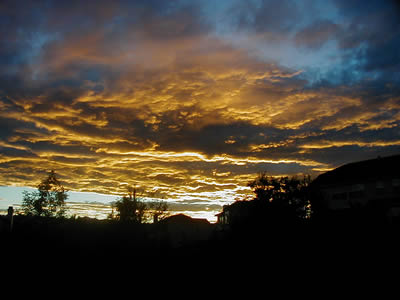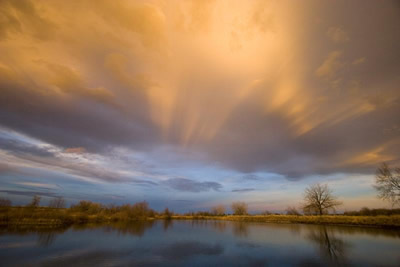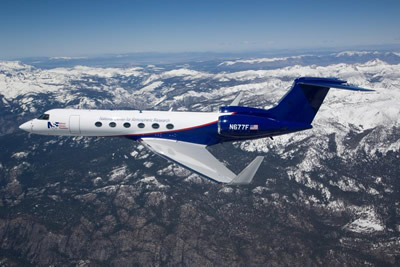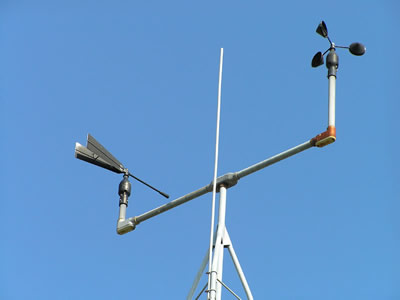When direct sunlight strikes falling rain, a rainbow is seen at a point directly opposite the Sun. This photograph is of a double rainbow.
Click on image for full size
Image Courtesy of Carlye Calvin/University Corporation for Atmospheric Research
Rainbows
Rainbows appear in the sky when there is bright
sunlight and rain. Sunlight is known as visible or white light and is actually a mixture of colors. The sun's rays pass through millions of raindrops. A raindrop acts like a prism by bending and scattering the light to form one large rainbow.
You can only see a rainbow if the sun is behind you and the rain in front.
You can even make your own rainbow with a garden hose or water sprinkler on a sunny day.
You might also be interested in:

Raindrops form when tiny water droplets collide together in clouds to form bigger ones. When they get too heavy, rain falls out of the clouds. Rain is more than 5mm in diameter. The types of clouds that
...more
Mine are the night and morning, The pits of air, the gulf of space, The sportive sun, the gibbous moon, The innumerable days. I hid in the solar glory, I am dumb in the pealing song, I rest on the pitch
...more
Have you ever seen clouds in the sky that looked different than "normal" clouds? Or have you wondered why rainbows form? Sometimes the things we see in the sky look very colorful or unique. Atmospheric
...more
Rainbows appear in the sky when there is bright sunlight and rain. Sunlight is known as visible or white light and is actually a mixture of colors. The sun's rays pass through millions of raindrops. A
...more
It takes the Earth one year to travel around the sun one time. During this year, there are four seasons: summer, autumn, winter, and spring. Each season depends on the amount of sunlight reaching the
...more
Scientists sometimes travel in airplanes that carry weather instruments in order to gather data about the atmosphere. These research aircraft bring air from the outside into the plane so scientists can
...more
An anemometer is a weather instrument used to measure the wind (it can also be called a wind gauge). These instruments can be used in a backyard weather station or on a well-equipped scientific research
...more














